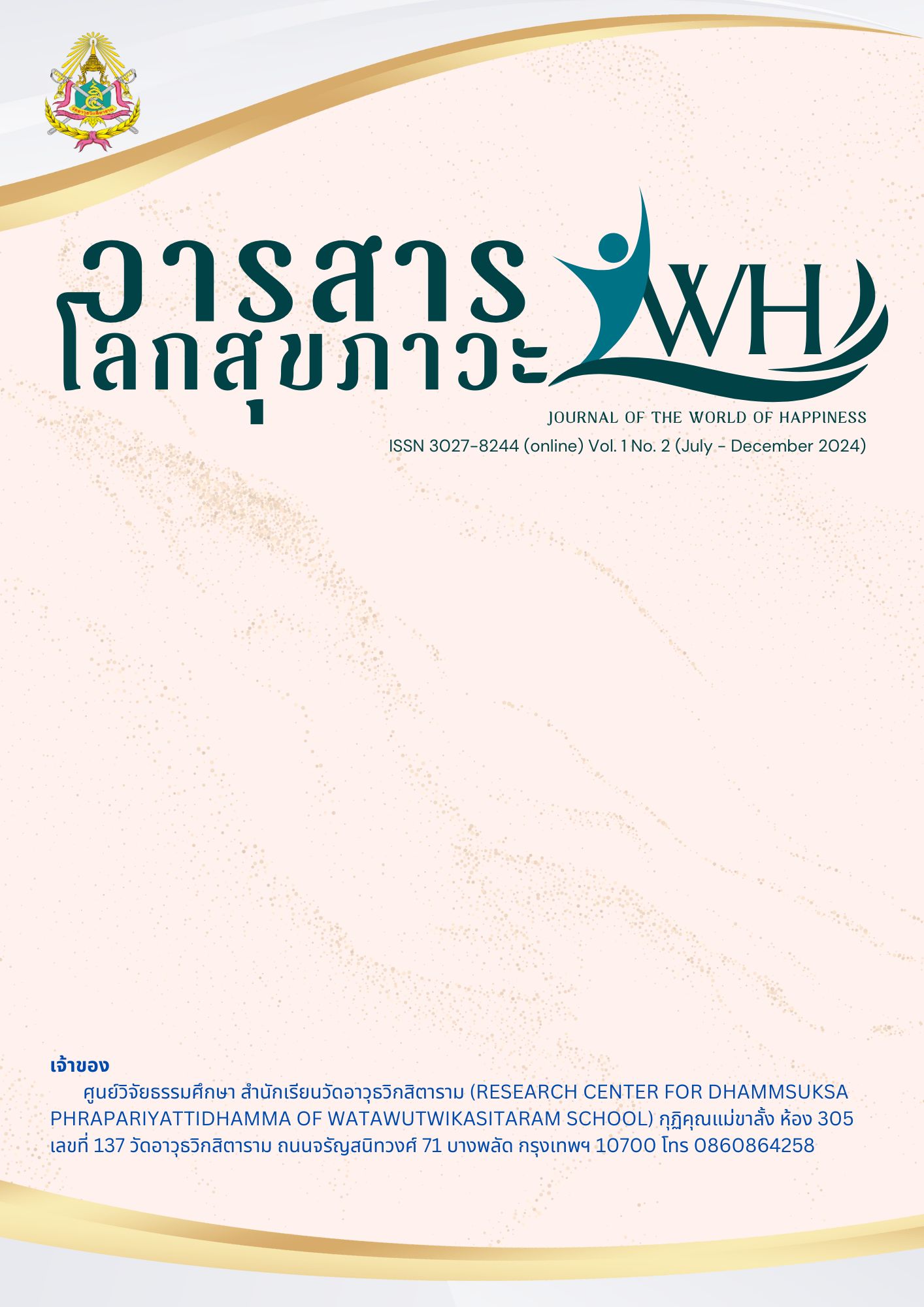An Analysis of the Concept of Anatta in Theravada Buddhism
Keywords:
Atta, Anatta, Theravada BuddhismAbstract
This article aims to achieve three objectives: (1) to study the concept of atta (self) in Theravada Buddhism, (2) to examine the concept of anatta (non-self) in Theravada Buddhism, and (3) to analyze the application of the concept of anatta in daily life. The study reveals that the concept of anatta is a fundamental teaching in Theravada Buddhism. Anatta refers to the absence of a permanent self in all phenomena, highlighting the true nature of the world, which is characterized by anicca (impermanence), dukkha (suffering), and anatta (non-self), collectively known as the Three Marks of Existence (Tilakkhana). Understanding anatta fosters detachment from clinging to the self or external objects, thereby alleviating suffering. This understanding promotes mindful living, intellectual development, and liberation from samsara (the cycle of rebirth), ultimately leading to true inner peace.
References
กรมการศาสนา. (2525). พระไตรปิฎกภาษาไทย ฉบับหลวง. (พิมพ์ครั้งที่ 4). กรุงเทพฯ : กระทรวงศึกษาธิการ.
พระเทพเวที (ประยุทธ์ ปยุตฺโต). (2530). พุทธธรรม (ฉบับเดิม). พิมพ์ครั้งที่ 8. กรุงเทพมหานคร : สำนักพิมพ์สุขภาพใจ.
ชเอิญศรี อิศรางกูร ณ อยุธยา. (2557). การศึกษาเชิงวิเคราะห์เรื่องอัตตาและอนัตตาในพุทธปรัชญาฝ่ายเถรวาท. วิทยานิพนธ์อักษรศาสตร์มหาบัณฑิต. แผนกวิชาปรัชญา บัณฑิตวิทยาลัย : จุฬาลงกรณ์มหาวิทยาลัย.
วิทย์ วิศทเวทย์. (2518). ความคิดเรื่องอนัตตาในพระสูตร. กรุงเทพมหานคร : จุฬาลงกรณ์มหาวิทยาลัย.
พระบวร กตปุญฺโญ. (2553). การศึกษาเปรียบเทียบทัศนะเรื่องอนัตตาในพุทธปรัชญาเถรวาทกับทัศนะของ ฌอง-ปอล ซาร์ตร์. บัณฑิตวิทยาลัย : มหาจุฬาลงกรณราชวิทยาลัย.





